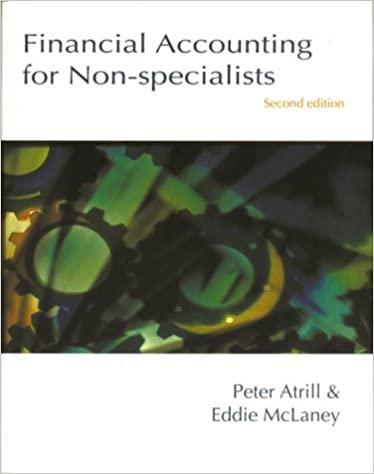Question
QUESTION 7 C and D organized Z Corporation 10 years ago, each contributing $40,000 and each receiving 400 shares of common stock. Five years ago,
QUESTION 7
-
C and D organized Z Corporation 10 years ago, each contributing $40,000 and each receiving 400 shares of common stock. Five years ago, in June, Z declared a one for one dividend payable in pure preferred with a $400 fair market value. The value of the common stock after the distribution was $1,600 per share. In that year, five years ago, Z had accumulated E&P of $52,000 and current E&P of $12,000. In the current year, Z has accumulated E&P of $112,000 and current E&P of $8,000. In December of the current year, C sells all of his preferred stock to E for $36,000. In June of that same year, C had previously sold all of his common stock to F for $200,000. E is Cs son.
a. There is a complete termination of Cs interest so that the preferred stock is excepted from the 306 rules.
b. 306 applies to Cs sale of the preferred. All $36,000 is treated as ordinary income.
c. The 306 rules apply to Cs sale of the preferred. Of the $36,000 sales price, $32,000 is treated as ordinary income.
d. None of the above.
2 points
QUESTION 8
-
C and D organized Z Corporation 10 years ago, each contributing $40,000 and each receiving 400 shares of common stock. Five years ago, in June, Z declared a one for one dividend payable in pure preferred with a $400 fair market value. The value of the common stock after the distribution was $1,600 per share. In that year, five years ago, Z had accumulated E&P of $52,000 and current E&P of $12,000. In the current year, Z has accumulated E&P of $112,000 and current E&P of $8,000. In December of the current year, C sells all of his preferred stock to E for $36,000. In June of that same year, C had previously sold all of his common stock to F for $200,000. E is Cs son.
Same facts as above except that shortly after receiving the preferred stock, C contributed to a charity and the charity shortly thereafter sells it to Z Corporation for $36,000.
a. C has a charitable contribution of $36,000.
b. Cs charitable contribution is not reduced by the ordinary income component of $32,000 resulting in a charitable contribution of $4,000.
c. The IRS might argue that there is no charitable contribution but rather a straight sale to the corporation Z by C resulting in $36,000 of ordinary income.
d. B and C.
e. None of the above.
Step by Step Solution
There are 3 Steps involved in it
Step: 1

Get Instant Access to Expert-Tailored Solutions
See step-by-step solutions with expert insights and AI powered tools for academic success
Step: 2

Step: 3

Ace Your Homework with AI
Get the answers you need in no time with our AI-driven, step-by-step assistance
Get Started


